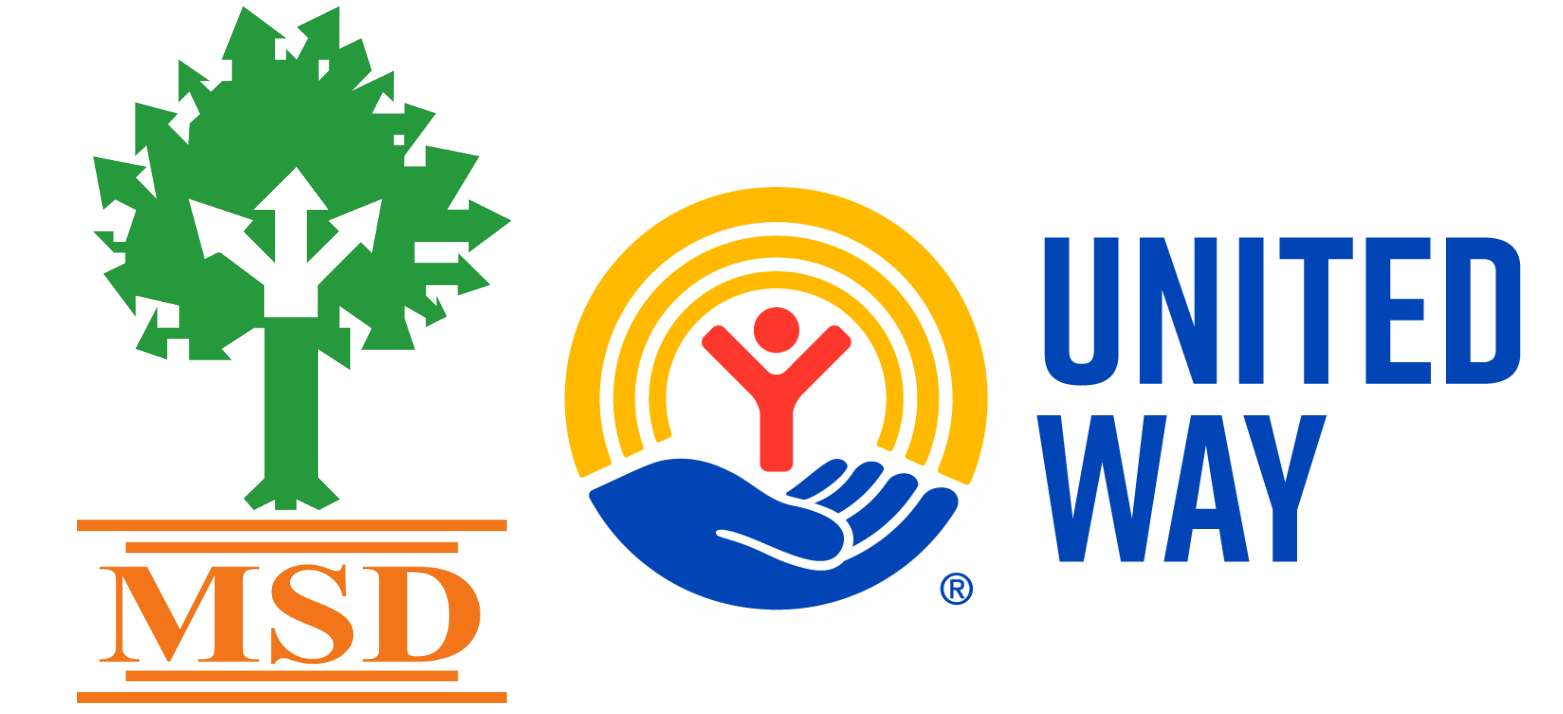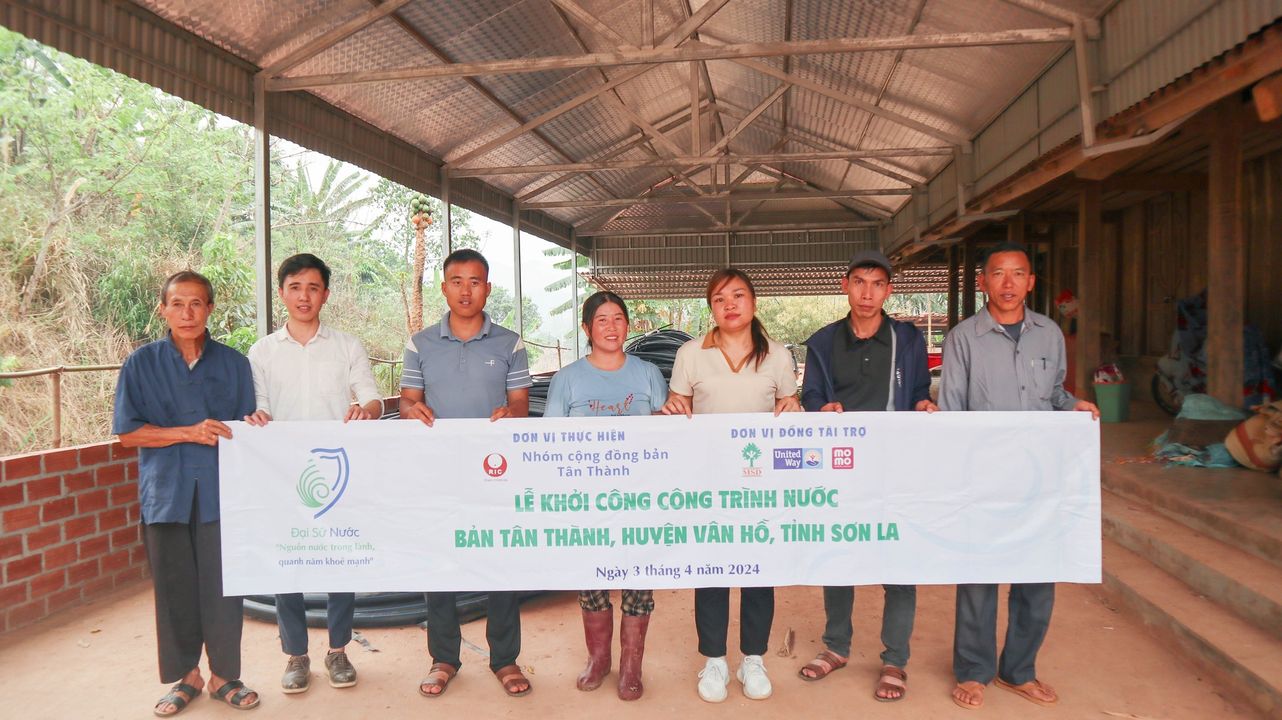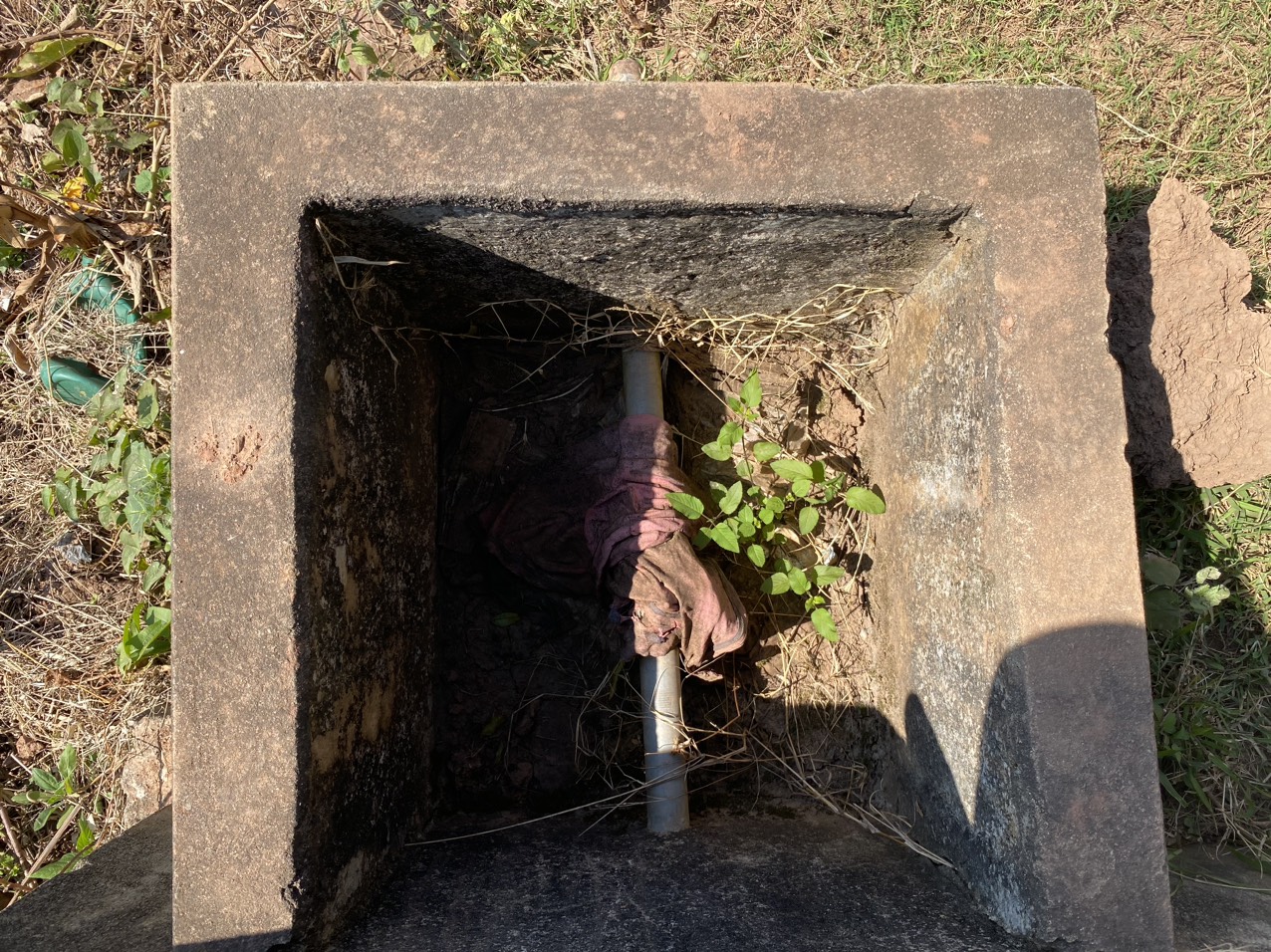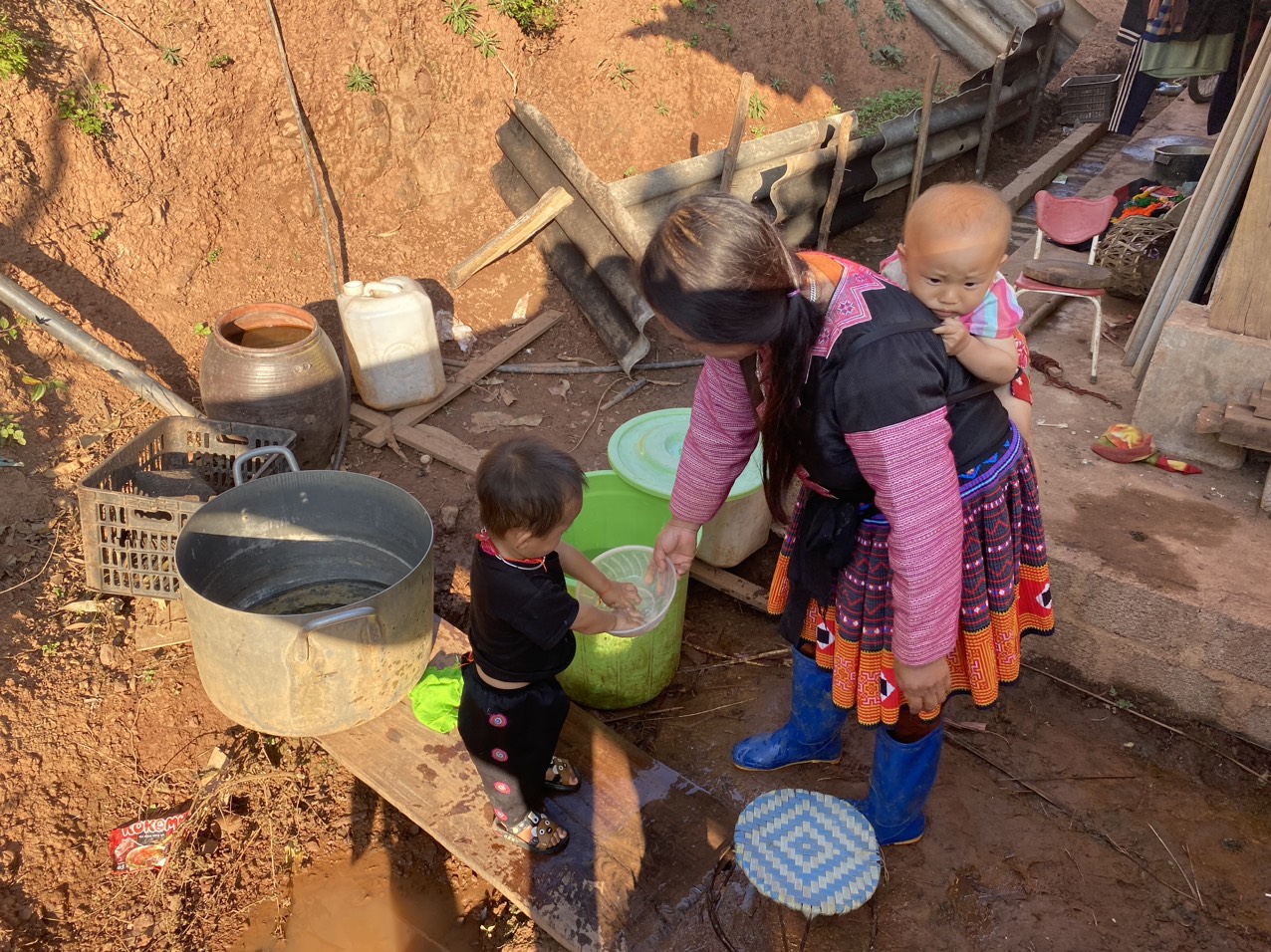I. GENERAL INFORMATION ABOUT THE PROJECT:
-
Implementation context:
Arriving in Son La in the early days of winter, just as the dry season begins, we followed local commune officials to Tan Thanh village — one of the most disadvantaged villages in Chieng Xuan commune, Van Ho district, Son La province. The village is home to 82 households with a total population of 446 people (226 men and 220 women), including 98 children. Of these, 28 households (34.1%) are classified as vulnerable, with 18 being poor and 10 near-poor. 100% of the population belongs to the H’mong ethnic minority group. The villagers mainly rely on small-scale agriculture, growing maize, cassava, and rice, and raising livestock.
The terrain is mountainous and uneven, and people live in scattered clusters. In 2007, under Program 135, the State invested in building a gravity-fed water supply system for the village. However, after more than seven years of use, the system has severely deteriorated: the headwater intake is now clogged with silt, five water tanks are cracked and abandoned, and the water pipelines are broken in many places — with some sections missing entirely. As a result, 33 households with 147 residents (including 68 women and 38 children) are no longer receiving an adequate water supply for their daily needs.
The pressure-reducing tank in the village is now abandoned, with no water flowing into it
Currently, 147 villagers are using plastic pipes and bamboo tubes to divert water from small natural springs (called mo) for daily use. Water shortages are a constant issue for families here — especially during the dry season. To cope, many households have built rainwater storage tanks to collect water during the rainy season for later use. Due to reliance on unsafe water sources, many residents of Tan Thanh village — particularly children — have suffered from illnesses such as eye infections and kidney stones. According to local health data, the rate of such illnesses has increased in the past year.
Mr. Giang A Chu, a resident of the village, shared: "During the rainy season, we have enough water to use. But in the dry season, the water just trickles out — sometimes we have to wait the entire day just to collect enough, and even then, it might not be sufficient. The water we bring down ourselves from the small springs is full of limestone. It’s okay for bathing, but not for drinking or cooking — it can lead to kidney stones. Earlier this year, someone from the village had to travel all the way to Hanoi for kidney stone treatment.”
The natural water source is now heavily contaminated due to encroachment by mud and silt
Having a stable and sustainable clean water supply has been the biggest wish of the 147 residents of Tan Thanh village for many years. Such a facility would mean they no longer have to worry about daily water shortages, or the health risks from using unhygienic water. However, given the difficult economic conditions in the village and the limited local government budget for repair and maintenance, it remains uncertain when this long-awaited dream will become a reality.
2. Project Implementation Timeline: From March 2023 to July 2023
3. Method of project implementation:
– The residents of Tan Thanh village are responsible for implementing the project under a Community-Based Management model, overseeing the entire construction process themselves.
– Local authorities at all levels and project staff from the RIC Center provide support in methods and technical expertise.
II. ACHIEVEMENTS:




